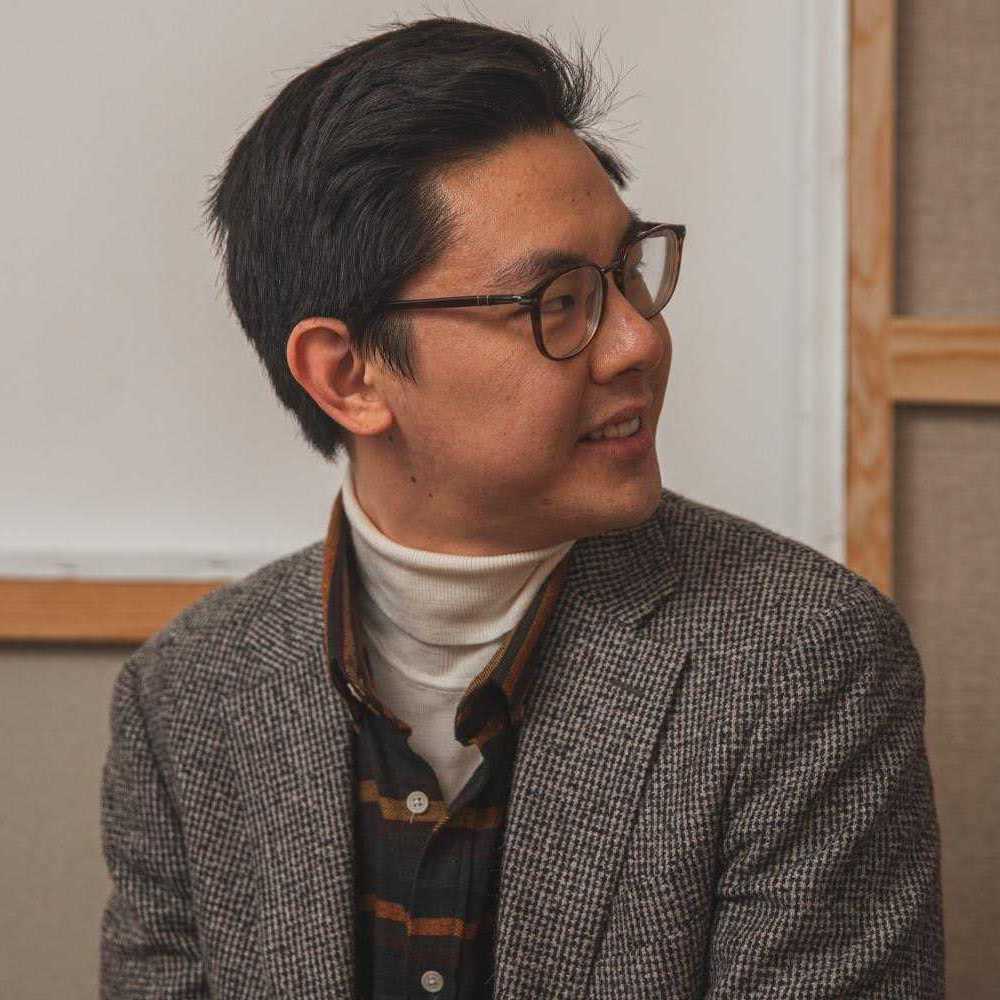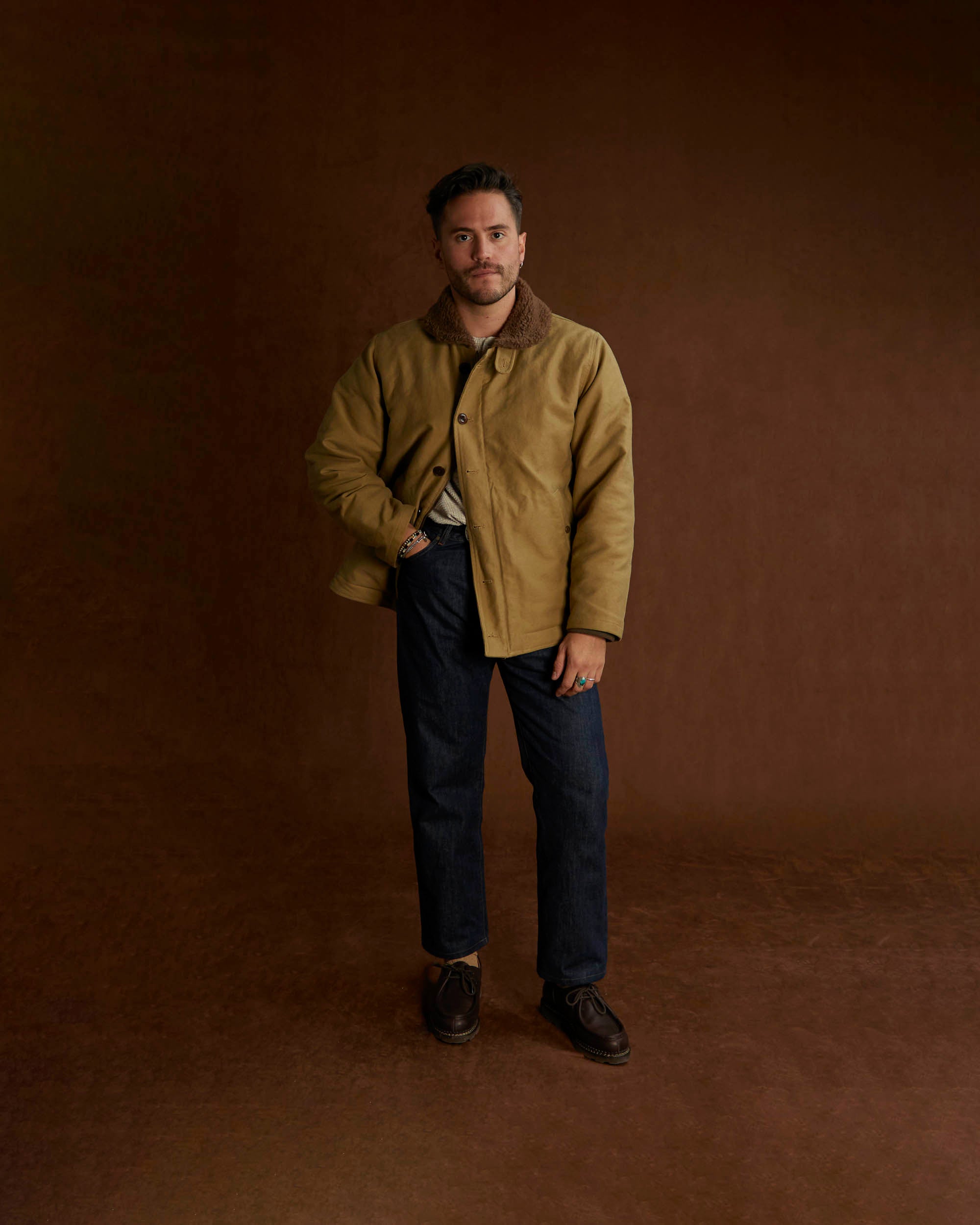Summary
Igarashi TrousersPants are the only style ally your legs have.
Unlike tops, you can't stack them or layer them (unless you're Superman).
The consequence is that all the elements of this garment count for your style: its length , its height , its belting , its cut , etc.
In this article, we are going to talk about a detail of pants that is more important than you might think: the pleats.

Two pliers are clearly visible here. Pants
More contemporary versions of the clips are found on Gurkha shorts , worn by Nepalese Gurkha soldiers of the 19th century. Shorts that the British army later adopted in their uniforms.

Nepalese Gurkha soldiers in their uniform. We can see a pincer on the person on the far left of this photo. Source: Gurkha Welfare Trust
The appearance of clips in urban areas, on suit pants is estimated at the beginning of the 20th century.
In my research, I came across this very good article . The author indicates that the inventor of the pleats on dress pants would be a Danish tailor based in Paris named Lars Larsen. He would have introduced them between 1910 and 1914.
You'll see a lot of pleated pants if you take a look at style photos from the last century.

Double pleated pants are not new. Credit: Mirrorpix via Getty Images
Pleats temporarily disappeared from pants at the end of the 2000s and during the 2010s, particularly with the emergence of slim and skinny pants. Since the pants are very close to the leg, the dart cannot be expressed and therefore has no place.

Stylist Hedi Slimane contributed greatly to the 2010s heyday of tailored pants with his work at Dior and Saint-Laurent . Photo credit: Victor Virgile for Getty Images
Pleats reappeared in the second half of the 2010s , with the return of classic style, sartorial pants and straighter cuts .
The dart is a sewn fold of fabric that sits just below the waistband.
The pleat should not be confused with the central pleat found on certain pants:
- The pleat of pants runs the entire length of the leg. It is marked when ironing and may fade.
- The clip is sewn. It is a structural element of clothing. We can't take it away.
It's not very clear ? Let's see the difference in pictures.
1. Pants with pleat and pleat
Trousers with pleats and a central pleat that extends the pleat tend to have a more formal, elegant appearance.
2. Pants with pleats but without pleats
Trousers with pleats and no pleats are either dress pants where the pleat has not been clearly marked, or casual pants where the pleat has a rather aesthetic role. It’s there to add a little something extra.
Here's a good example below with these pants, which have a pleat but aren't very formal. It's still a chino:
3. Pants with pleat but without pleat
Trousers that have a central pleat but no pleat are, most of the time, dress pants like suit pants.
Now that we have understood what the clamp was, we can wonder about its function.
1. Practical interest
The fold of tissue created by the clamp has the ability to open.
Thus, the gripper provides comfort at the hips and upper thigh.
This allows the pants not to stick to your skin, especially for people with stronger hips or thighs:
This ease is also appreciable in a seated position:
2. Aesthetic interest
Apart from the practical aspect, we can simply consider that the clip dresses the leg.
If you want to change the basic looking pants that are usually found (pants without pleats are called "flat gathers" in English), the pleat is an element to consider which makes it a little stronger visually.

City pants with a basic and sober style: a pleat along the leg and that's it. Burton of London

In addition to the color, these pants have details that make them stronger: offset buttoning, tightening tabs, cuffed bottoms... and double pleats. Berg&Berg
The number of claws is traditionally given per leg.
1. Pliers
This means there is one clamp per leg, two in total.
2. Two pliers
This means there are two clamps on each leg, four in total.
In this case, you have:
- A central dart, in the middle of the leg. If there is a central crease, it extends from this first dart
- A second, smaller clip on the side of the leg. It is positioned between the first clamp and the pocket
3. Three pliers
Much more marginally, I once came across a pair of shorts with three darts (three darts per leg, six in total, are you still following?).
The approach here is more aesthetic and creative:

Three-pleat Bermuda shorts from the Korean brand Amfeast
4. How many pliers to choose?
If we exclude the case of pants with three pleats, it comes down to asking: one or two pleats?
There isn't really a set answer. Different criteria are taken into account.
There is a question of morphology : if you have a wider pelvis or thighs, pants with two pleats will be more appropriate because they will give you more ease in this area.
⚠ If you have a wide pelvis or thighs, the cut of the pants will matter more than the presence of pleats. Better enough loose pants without pleats than too tight pants with pleats.
There is also a question of style : pants with a pleat on each leg are more discreet. Two-pleat pants are more noticeable and visually stronger.
Ultimately, it's a matter of personal taste . If you are a big fan of sartorial style, you may find the look of two-pleat pants more majestic.
This is a detail you may have never noticed: the clamps can be oriented in different ways.
1. Clamp outwards
The excess fabric created by the clip is directed outwards, towards the pocket.

The opening of the pliers goes outwards. Poszetka

Technically, this is how we arrive at an external clamp. Credit: Black Lapel
To designate it, we speak in French of "Italian" pliers. In English, we say "reverse pleat".
The outward clamp has a more modern connotation . This is the one you will see most often among brands.
Visually, the outer dart brings out the thigh a little more and the pelvis a little less.
2. Clamp inward
The excess fabric created by the clip is directed inwards, towards the crotch.

The opening of the pliers goes inwards. General Pharmacy

Technically, this is how we end up with an interior clamp. Credit: Black Lapel
To designate it, we also speak in French of “English fold”. In English the terms "French pleat" or "forward pleat" are used.
Why do the French speak of "English" pliers and the English of "French" pliers to designate the same thing?
I asked Nicolò. Here is his response:
“These are common words that come from an a posteriori reinterpretation of the history of clothing. A stereotyping, in short.
It's difficult to know exactly why this or that term is used, but we can make some assumptions.
Plausible example: the French imagine that the exterior pincers are very Italian since they see the Italians doing it, therefore "Italian pincer". They also see the English choosing the interior pliers, which they will therefore call English.
For their part, the English say that the great tailors (at the time) are in Paris and that the interior darts are "the canon", so they will sometimes call them French.
Moreover, the inward dart has a more traditional, classic connotation. You will find it less often in ready-to-wear.
Visually, the inner dart brings out the pelvis a little more and the thigh a little less.
3. Which clamp orientation should you choose?
Here are the simple tips I would give on this subject:
- The outward clamps, more widespread and contemporary, seem to me to be a good default choice if you don't really know which way to go
- If you like the classic sartorial style, inward darts are a good choice.
To add nuance, I would say: if you have a stocky physique or want to choose pleated pants with a fitted cut, choose pleats facing outwards.
Indeed, if the pants are close to your leg, an exterior dart opens and flattens to the side. The rendering is correct.

The clamp, towards the outside, opens and flattens. She fades away. Suitsupply
On the other hand, an inward clamp, when forced to unfold, rises a little and swells. The rendering is not optimal.

The pliers bend upwards, appearing as if blistered. Source
Finally, I would say that unless you are extremely demanding, the orientation of the pliers should not be a eliminating criterion.
If you come across a pair of pants that you really like, regardless of the orientation of the pliers: grab them. The information given here are rather indications, general rules, not dogmas.
Don't fall for Les Garçonnes
Likewise, we can imagine a case where the first clamp is towards the outside and the second clamp is towards the inside.
I don't have any visuals to show you for this case though.
There are not only outward and inward clamps.
Here are two other rarer pliers that you will sometimes find.
1. The box pleat
It is commonly called "box fold" in France. The English term for this pliers is “kissing pleat”.
Visually, it has a furrow shape: it opens outwards and inwards.
It's a very niche sartorial detail that you'll mostly find at cutting-edge brands.
I think for example of Igarashi Trousers:
Box pleated pants are rare in ready-to-wear.
The only two brands I have seen offering them in our universe are ABCL Garments and Pini Parma :

2. The extended pliers
We radically change the style register by evoking pliers... which doesn't really have a fixed name.
I call it extended dart because it is a dart sewn from the bottom of the waistband and extends all the way to the bottom of the leg.
This clip also takes the role of central crease, with the difference that it cannot fade.
You will find this type of dart mainly on jogging pants , pants on which a classic dart would not look good because of the soft appearance of the material.

Ninety Percent fleece joggers found on Mr.Porter
I have in mind only one pair of pants that isn't jogging with this clip, it's the Alpine Pant from Scott Fraser Collection:

Finally, here is a non-exhaustive list of brands offering pleated pants, classified in alphabetical order:
1. Less than 100€
- Arket
- Brut Clothing (vintage range)
- COS
- PuroEgo
- Gutteridge
- Outland
- October Editions
- Uniqlo

Outland casual chinos, one pleat
2. Between 100 and 200€
- Benevento
- Brut Clothing (Rework range)
- Casatlantic
- Folk
- Hast
- Natalino
- Pini Parma
- Poszetka
- Scavini
- Suitsupply
- Universal Works

Brut Collection moleskine chinos, two clips
3. More than 200€

ABCL Garments chinos, Miniera model, one pleat
You will also find pleated pants in the BonneGueule clothing collection:








